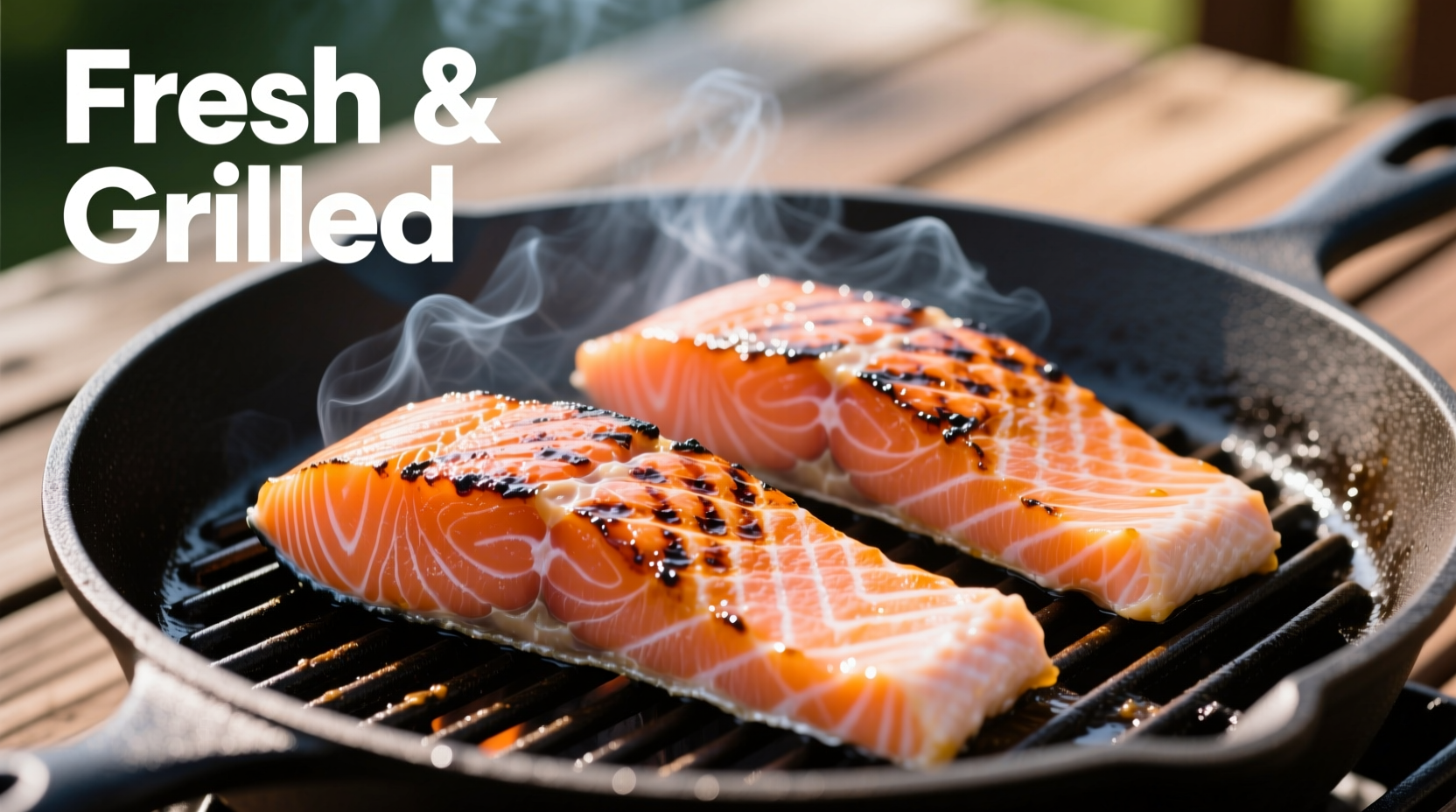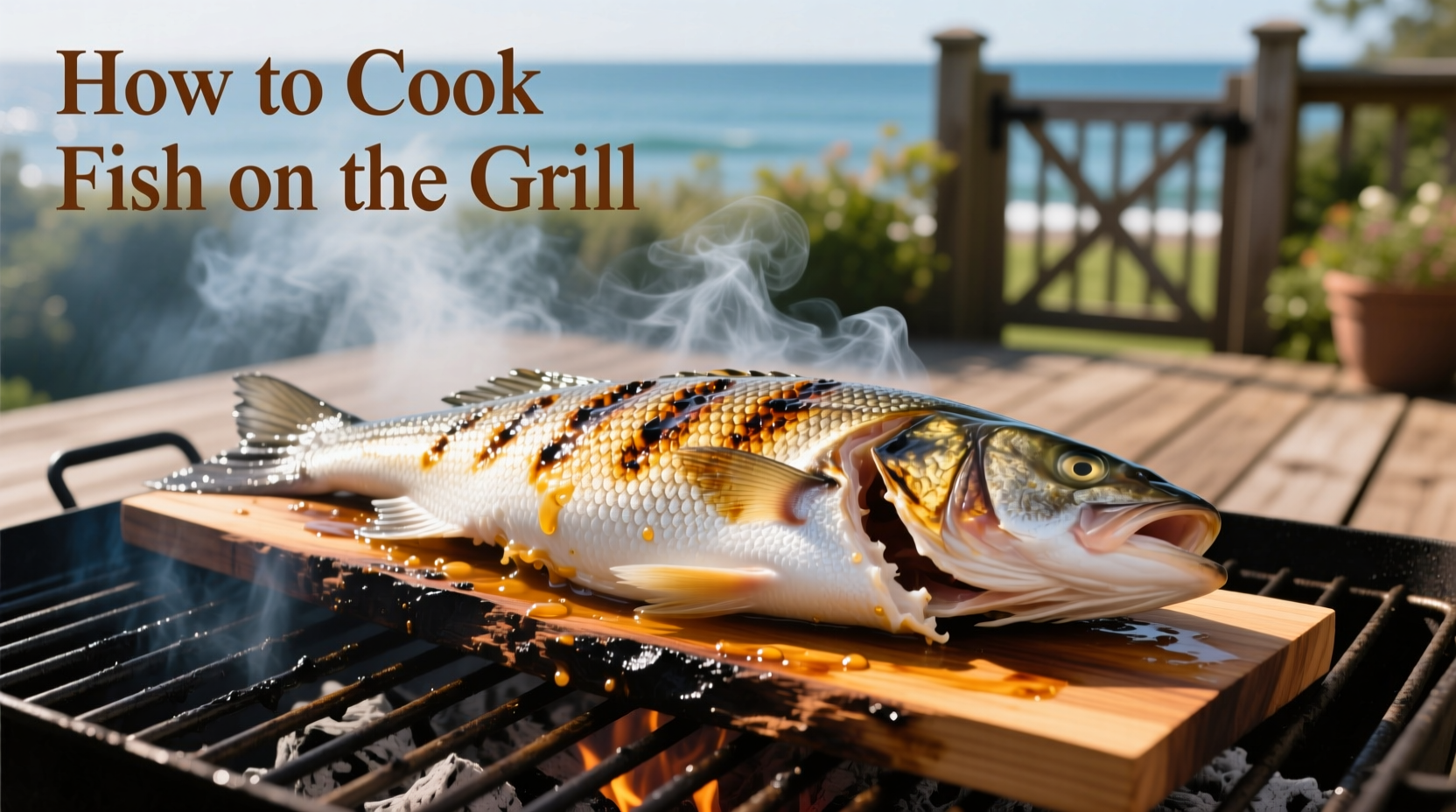Grilling fish perfectly requires selecting the right fish, proper grill preparation, precise timing (typically 8-10 minutes total), and using oil to prevent sticking. Follow these professional techniques for flaky, flavorful results every time.
Nothing compares to the smoky flavor of perfectly grilled fish. Whether you're a weekend barbecue enthusiast or a seasoned griller, mastering fish on the grill transforms simple ingredients into restaurant-quality meals. This guide delivers field-tested techniques from culinary professionals to help you avoid common pitfalls and achieve consistent results.
Why Fish Grilling Fails (And How to Fix It)
Most home grillers struggle with fish sticking to grates, uneven cooking, or dry, overcooked results. The solution lies in understanding fish biology and heat dynamics. Unlike meat, fish proteins denature quickly at high temperatures, causing delicate flesh to stick and tear. By controlling heat zones and using strategic preparation methods, you'll produce restaurant-quality grilled fish every time.
Essential Pre-Grill Preparation
Success begins long before the fish hits the grill. Follow these preparation steps for optimal results:
Choosing the Right Fish
Firm-fleshed fish withstand grilling best. Opt for:
- Salmon (skin-on for stability)
- Tuna steaks (1-1.5 inches thick)
- Halibut fillets
- Swordfish steaks
- Sea bass (whole or thick fillets)
Avoid delicate fish like sole or flounder unless using a fish basket or cedar plank.
| Fish Type | Thickness | Grill Temp | Cook Time | Special Notes |
|---|---|---|---|---|
| Salmon | 1-1.5 inches | Medium (375°F) | 8-10 min | Skin-side down first |
| Tuna | 1-2 inches | High (450°F) | 4-6 min | Rare center preferred |
| Halibut | 1 inch | Medium (375°F) | 6-8 min | Brush with oil generously |
| Swordfish | 1-1.5 inches | Medium-High (400°F) | 8-10 min | Marinate 30 min max |
This comparison reflects guidelines from the U.S. Food and Drug Administration's seafood safety recommendations, ensuring proper cooking temperatures while maintaining optimal texture.
Grill Setup for Success
Create two distinct heat zones:
- Direct heat zone: For searing (400-450°F)
- Indirect heat zone: For gentle cooking (275-325°F)
For charcoal grills, bank coals to one side. For gas grills, light only half the burners. Clean and oil grates thoroughly using tongs and a folded paper towel dipped in vegetable oil.

Step-by-Step Grilling Process
1. Fish Preparation (5 Minutes Before Grilling)
Dry fish thoroughly with paper towels - moisture causes steaming instead of searing. Brush both sides with high-smoke-point oil (avocado or grapeseed). Season simply with salt, pepper, and optional citrus zest. Avoid wet marinades that promote sticking.
2. The Critical First Sear (3-4 Minutes)
Place fish at a 45-degree angle to grill grates over direct heat. Press gently for 10 seconds to ensure contact. DO NOT move during initial searing - this creates the release layer that prevents sticking. Check for natural release before attempting to flip.
3. Finishing the Cook (4-6 Minutes)
Move to indirect heat zone after searing. For thicker cuts (over 1 inch), close the lid to create an oven-like environment. Fish is done when internal temperature reaches 125-130°F for medium-rare or 135-140°F for medium. The flesh should flake easily but remain moist.
Advanced Techniques for Perfect Results
Preventing Common Problems
Sticking solution: Ensure grill is properly preheated (5-10 minutes) and grates are impeccably clean. Use fish with higher fat content for beginners.
Dry fish solution: Never overcook - fish continues cooking off-heat. Remove at 125°F for carryover cooking to perfect 135°F.
Flavor Enhancement Methods
- Cedar planking: Soak plank 1 hour, place fish on plank over indirect heat
- Grill baskets: Ideal for delicate fish or small pieces
- Wood chips: Alder or applewood chips add subtle smoke flavor
When Grilling Isn't the Best Option
While versatile, grilling has limitations. Avoid direct grilling for:
- Extremely thin fillets (under 1/2 inch)
- Highly delicate fish like flounder
- Rainy or extremely windy conditions
- When precise temperature control is unavailable
In these scenarios, consider plank grilling, using a basket, or switching to alternative cooking methods.
Final Pro Tips for Consistent Success
Professional chefs recommend these finishing touches:
- Let fish rest 3-5 minutes before serving
- Use a fish spatula with thin, flexible blade
- Add fresh herbs during last 2 minutes of cooking
- Finish with citrus juice or flavored butter
- Always have a backup plan for flare-ups











 浙公网安备
33010002000092号
浙公网安备
33010002000092号 浙B2-20120091-4
浙B2-20120091-4